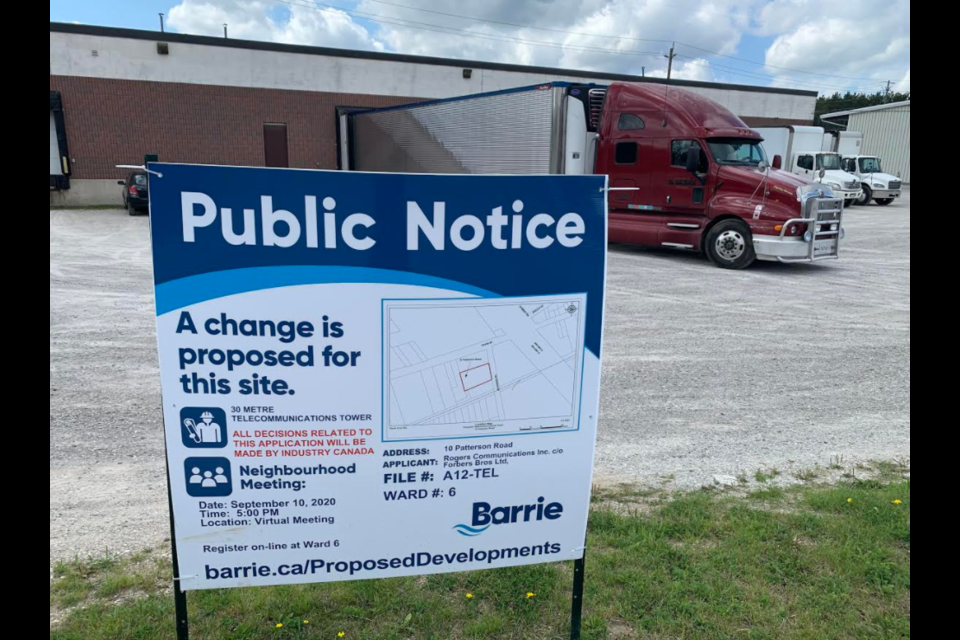Rogers is taking steps to possibly improve wireless coverage in Barrie.
A public meeting took place recently regarding a proposal from Rogers Telecommunications Inc., to build a 40-metre cell tower at 10 Patterson Rd., near Tiffin Street.
The area has been identified by the company as having weak or insufficient LTE coverage, and needing improved infrastructure.
As no buildings or pre-existing structures in the area are tall enough to affix the tower, the company has determined it needs to build its own, which will include transmitting and receiving antennas and radio equipment secured in a fenced compound.
“Rogers is seeking to improve service for the areas surrounding Tiffin Street, Ferndale Drive and Highway 400,” wrote Sean Ogilvie, with Forbes Bros. Ltd. Telecommunications Services, in his report.
The proposed tower would be 165 metres away from the nearest residential property.
Ogilvie was present to answer questions from the public during the meeting, which took place on Sept. 10.
Kevin Hunter asked about health risks for surrounding property owners.
“Are there any studies on 5G that can prove there is no risk?” Hunter asked.
“With both of these sites, neither is a 5G site. They’re both designed to improve existing 3G and 4G coverage,” said Ogilvie. “In Canada, there is a governing body that sets regulations for radio frequency exposure. The spectrum range is 3 kHz to 300,000 GHz.
"Health Canada has also imposed regulations called Safety Code 6, which is an exposure limit that all wireless carriers have to abide by," Ogilvie added.
Ogilvie said the regulations are based on 50 years and thousands of studies on wireless signals and health.
“The (government has) selected a limit that is 50 times lower than any established scientific effects on humans. That is where the maximum limit starts,” said Ogilvie. “The real-world effects are 100 times lower than that because you aren’t right up against the equipment. You’re 30 to 40 metres away at a minimum.”
While the meeting was overseen by city staff, final approval for the proposal comes from Industry Canada.
For more information on the proposal or to provide feedback, click here.



